“How Can I Grow Healthy Tomato Plants?”
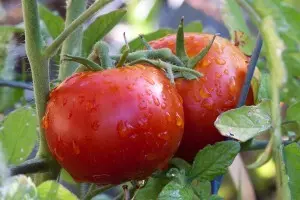
That is by far the most frequently asked question to the blog each and every summer – and with good reason.
Whether it be blight, black rot, insect damage, or watering issues – the tomato has a lot of natural enemies that can keep you from harvesting a great crop – especially if you grow heirloom varieties.
But don’t despair – there are 6 simple tips to follow that can go a long way towards growing healthy tomato plants this year – and keep you seeing the right kind of red!
So read up, and get ready to have a bumper crop of tomatoes this year.
How To Grow Healthy Tomato Plants
Rotate Your Plants
This is tip listed first for a reason – because it’s HUGE!
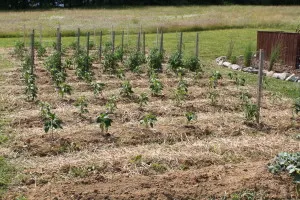
The first rule of thumb when it comes to keeping tomato plants healthy is to plant them in a different area each year. Many of diseases that affect tomatoes (like blight) are soil borne.
In addition, many of the pests that will attack your plants hide in that very same soil – so keeping your plants on the move can make all the difference in keeping both from becoming established.
Add in that tomatoes take a lot of nitrogen and nutrients from the soil – and you need to give them new fertile space each season!
Tomatoes need to be rotated each and every year. If you grow in containers, this means changing out the soil as well. A good rule of thumb is to give three growing seasons between plantings to let the soil recover.
Use Egg Shells, Coffee Grounds At Planting Time
When you plant – give your tomatoes a head start by mixing in a few crushed egg shells, 2 tablespoons of used coffee grounds, and a shovelful of compost in every planting hole!
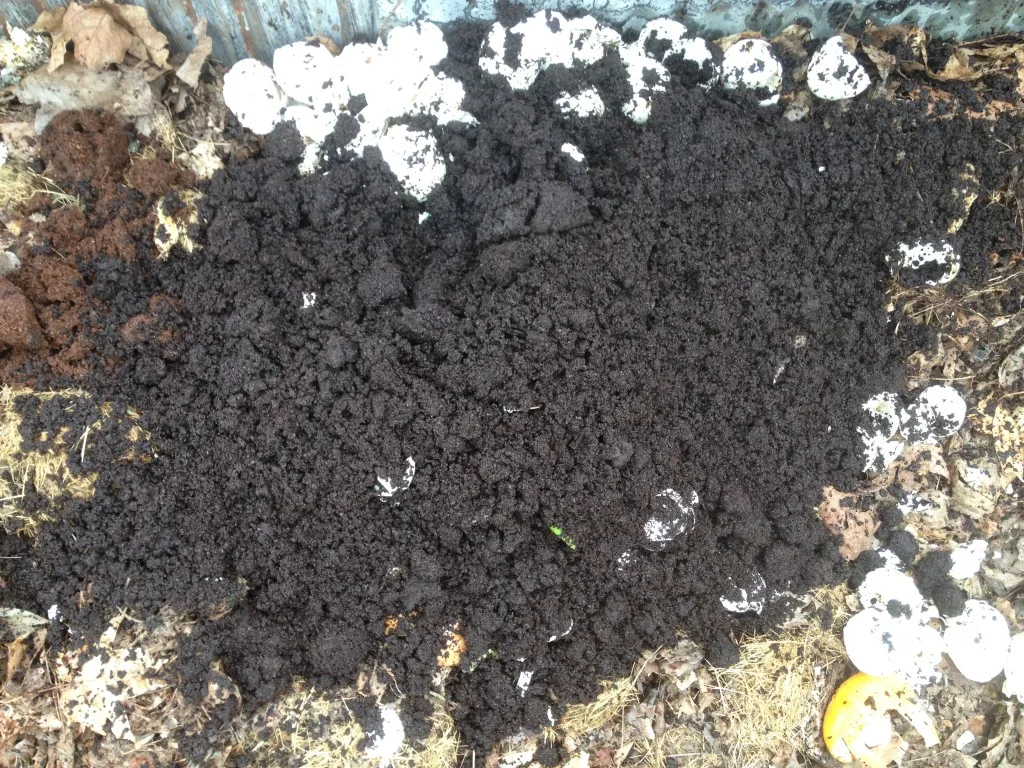
Crushed egg shells add calcium to the soil as they break down – which can help prevent blossom rot in tomatoes. Blossom rot is caused in part by a lack of calcium in the soil – which crushed egg shells can help to add back.
We add in a few tablespoons of coffee grounds to the planting hole as well. Coffee grounds release nitrogen, potassium, phosphorus and other minerals as they break down – acting as a great natural slow-release fertilizer to the plants. When you add in the compost – it gives the young tomato plants a great start to a great harvest! See : Why Egg Shells and Coffee Grounds Are A Gardener’s Best Friend
Prune And Support Your Tomatoes
Left alone to grow as they please – tomato plants will grow into a mess of stems, shoots, roots and leaves. That tangled mess invites all types of pests and disease that can wreak havoc on your tomato plants. Clearing out the bottom stems and leaves from your tomato plants allows for better air circulation – and makes it harder for pests and disease to take control.
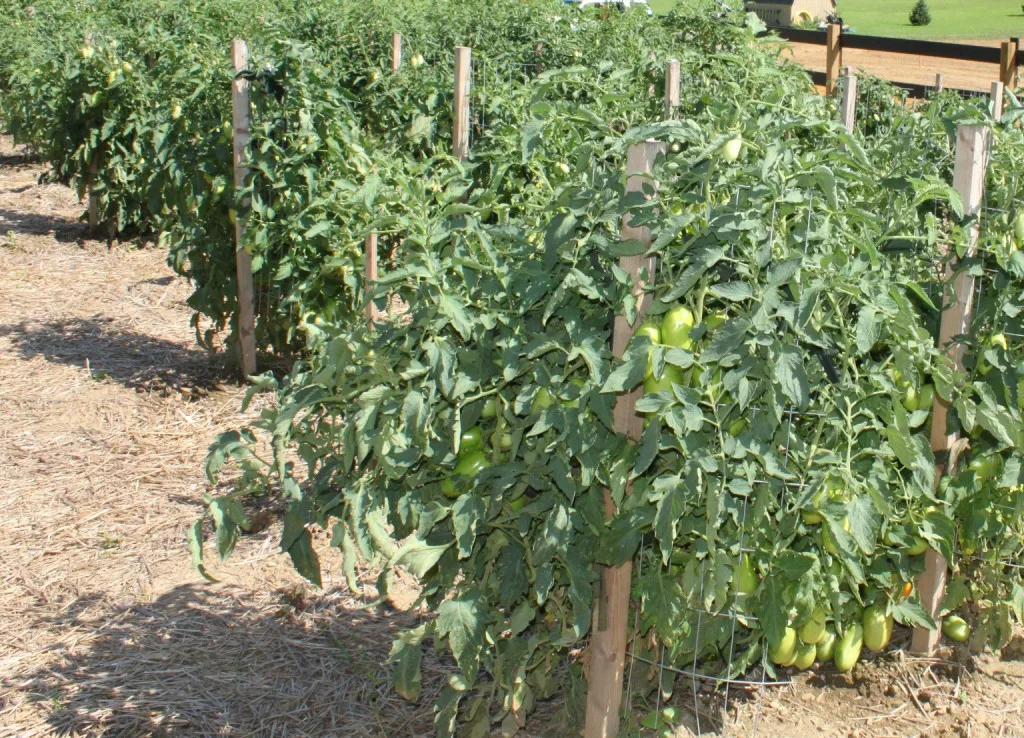
Whether you use cages, stakes, or a hybrid system like we do (See Stake a Cage), it’s critical to provide great support for your tomato plants. It keeps them off the ground – away from pests and foot traffic, and allows yours tomatoes to ripen with good circulation and exposure to sunlight.
Mulch Your Plants
Mulching helps keep weeds at bay – and remember that those weeds compete for the same nutrients your tomatoes need. Mulching also helps to keep the soil temperatures regulated and keep your plants from drying out.
We like to ramp up our efforts by mulching our tomato plants with a 1 to 2″ thick layer of compost – creating a 6 to 8″ mulch ring around each stalk. In addition to all of the above mentioned benefits – it also acts as a slow-release fertilizer as nutrients strain through it during watering or rainfalls.
Water Correctly
If you want healthy tomato plants – then watering correctly is a must! It’s best to water in the early hours between sunrise and mid-morning so plants are not stressed from the heat of the day. Evening watering is the next best choice, although it can create mildew water sits on leaves through the cool nights. Try to water the soil around the roots – not the leaves.
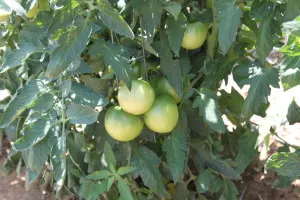
How much water? You will need to water daily to get plants established when first planted. Once established – tomatoes need about 1 inch of water a week. If rain isn’t helping – water every two to three days with about a 1/2″ of water to the plant at a time – about 1/4 to 1/2 gallon per plant. This allows enough water to go deep into the soil and create longer roots.
Why not every day? Plants that get small amounts of water every day never send roots deeper to look for moisture and nutrients – and you end up with a weak root system – and a weak plant.
Easy On The Fertilizer
Too much fertilizer can leave plants full of bright green foliage – and no tomatoes! In addition, when used in heavy doses over time, synthetic fertilizers can leave your soil filled with salt – leaving you to add more and more fertilizer each season to obtain the same results.
If you use compost in your planting holes and as a top-dressing and practice plant rotation – there really is no need for synthetic fertilizers to get a great crop of tomatoes.
If you want to give your plants an all natural boost – you can apply compost tea – a simple solution of water-soaked and steeped in fresh compost. The water absorbs the natural nutrients from the compost and becomes an “all natural” liquid fertilizer. (See: Making Compost Tea)
So get ready to grow a great crop of tomatoes this year! For all of our gardening tips each week – be sure to sign up to follow our blog in the right hand corner of the page.
Happy Gardening! – Jim and Mary
Old World Garden Farms
